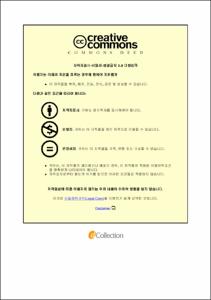Ulsan Univ. Repository
Thesis
General Graduate School
Environmental Construction Engineering
2. Theses (Ph.D)
DEVELOPMENT OF BIO-INSPIRED SUPERHYDROPHOBIC SURFACES AND THEIR ENVIRONMENTAL APPLICATIONS
- Abstract
- Recently, superhydrophobic materials with static water contact angle higher than 150o and dynamic water contact angle less than 10o have attracted the attention due to their unique properties and their potential for practical applications, such as self-cleaning, anti-wetting, anti-icing, anti-corrosion, etc.,. Superhydrophobic surfaces could help to minimizing the energy and water required for cleaning, reducing the utilization of pollution and waste caused by cleaning process and even can be applied for oil/water separation - one of the biggest issues in environmental field at this moment. This dissertation investigates the fabrication, characterization of various superhydrophobic surfaces and their diverse environmental applications.
The thesis is organized as follow: In Chapter I (Introduction), it includes: objective/goal of this research study, background of super-hydrophobicity and theoretical basis. Chapter II, III and IV describes about three different superhydrophobic materials developed on (i) the cotton fabric, (ii) polyurethane sponge and (iii) melamine sponge, respectively. Novel techniques for creating superhydrophobic surfaces on three different substrates are presented in this dissertation. Furthermore, several potential applications such as self-cleaning, anti-wetting, floating oil sorption and oil-water separation were proposed. Chapter V concluded the research and proposed the future work.
- Issued Date
- 2017
- Awarded Date
- 2018-02
- Type
- Dissertation
- Affiliation
- 울산대학교
- Department
- 일반대학원 건설환경공학과
- Advisor
- Byeong Kyu Lee
- Degree
- Doctor
- Publisher
- 울산대학교 일반대학원 건설환경공학과
- Language
- eng
- Rights
- 울산대학교 논문은 저작권에 의해 보호받습니다.
- Appears in Collections:
- Environmental Construction Engineering > 2. Theses (Ph.D)
- 파일 목록
-
-
Download
 200000003296.pdf
기타 데이터 / 5.27 MB / Adobe PDF
200000003296.pdf
기타 데이터 / 5.27 MB / Adobe PDF
-
Items in Repository are protected by copyright, with all rights reserved, unless otherwise indicated.